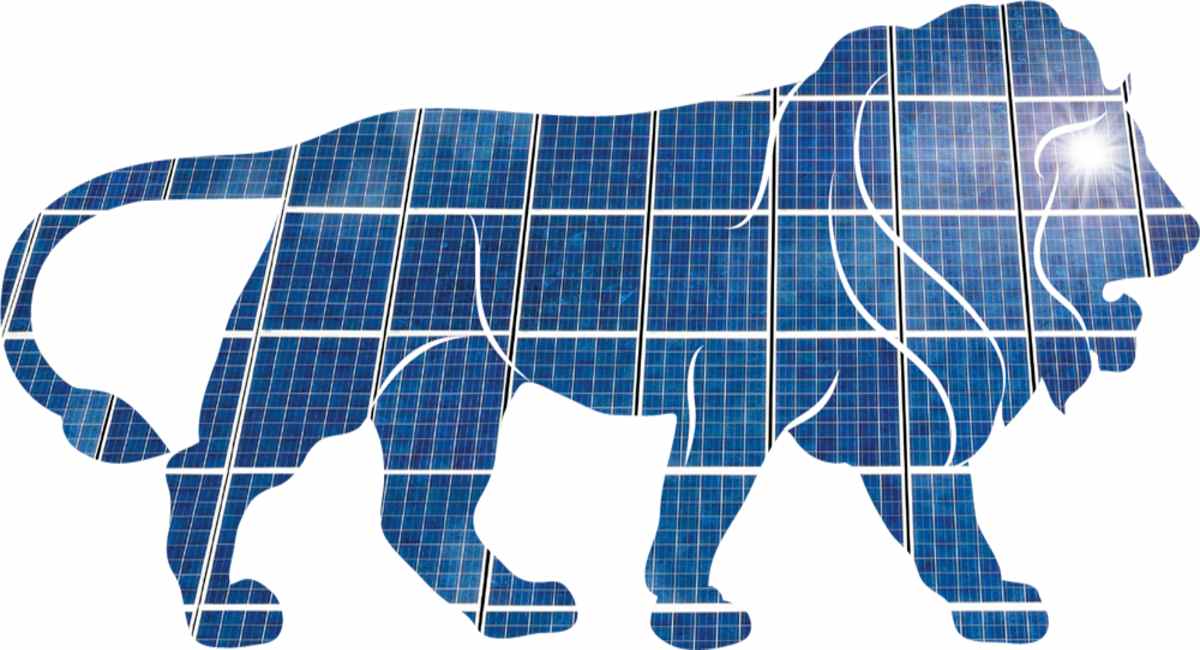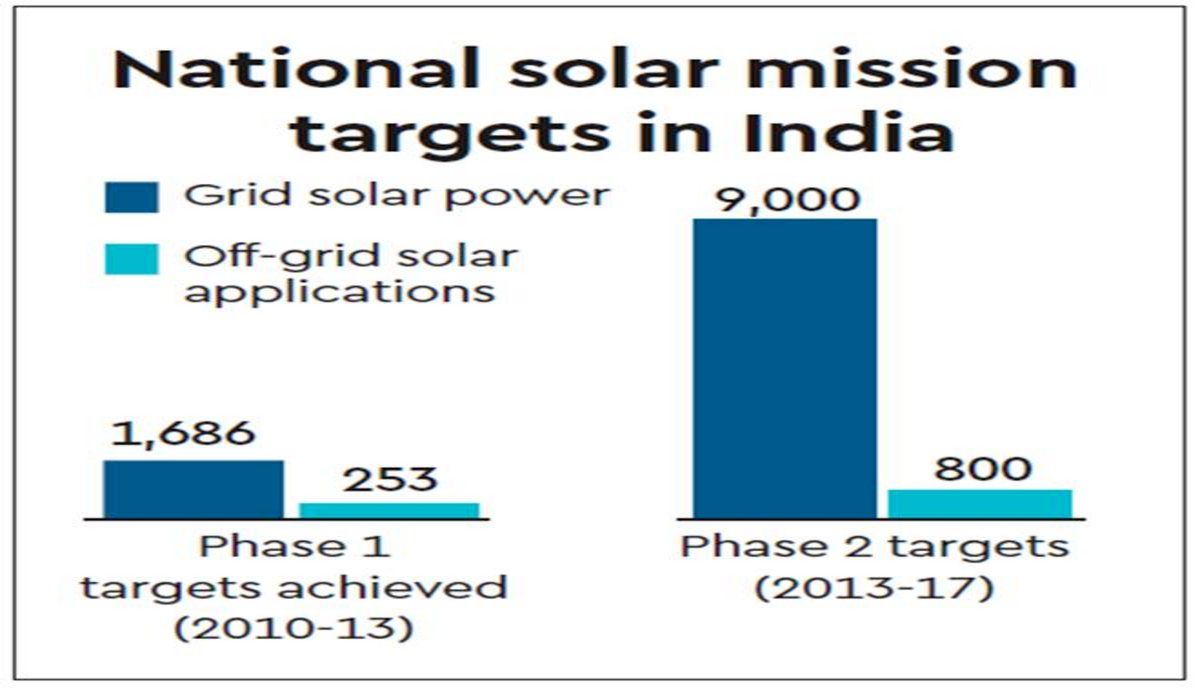Government Bodies Associated With Solar In India

Solar Energy In India:
Since ancient times, people have venerated the Sun as the source of all life on Earth. The industrial period taught us about sunlight as an energy source. India has a large solar energy potential. Approximately 5,000 trillion kWh of energy is incident over India's geographical surface each year, with most areas receiving 4–7 kWh per square meter every day. Solar photovoltaic electricity may be successfully harvested, allowing for massive scalability in India. Solar also enables dispersed power generation and rapid capacity expansion with short lead times. Off-grid, decentralized, and low-temperature applications will benefit rural electrification as well as satisfy other energy demands for electricity, heating, and cooling in both rural and urban locations. Solar energy is the most secure of all energy sources since it is readily accessible. In theory, a small proportion of total incoming solar energy (if caught properly) can supply all of the country's electricity needs.
Solar energy has had a noticeable influence on the Indian energy landscape in recent years. Millions of people in Indian communities have benefited from solar energy-based decentralized and distributed applications that satisfy their cooking, lighting, and other energy demands in an environmentally benign manner. The social and economic benefits include reduced drudgery among rural women and girls engaged in long-distance fuel wood collection and cooking in smoky kitchens; reduced risks of contracting lung and eye ailments; job creation at the village level; and, ultimately, an improvement in the standard of living and the creation of opportunities for economic activities at the village level. Furthermore, over the years, India's solar energy sector has emerged as a prominent participant in grid-connected power generation capacity. It contributes to the government's vision of sustainable growth while emerging as a vital actor in meeting the nation's energy demands and ensuring energy security.
Solar Energy Corporation of India:
Solar Energy Corporation of India Ltd. (SECI) is a government-owned business formed by the Ministry of New and Renewable Energy to aid in the implementation of the National Solar Mission (NSM). It is the first Central Public Sector Undertaking (PSU) devoted entirely to solar energy. The scope of the firm has been expanded to include the whole renewable energy domain, and the company will be called Renewable Energy Corporation of India (RECI).
The company is in charge of implementing a number of government schemes, the most important of which are the VGF schemes for large-scale grid-connected projects under NSM, the solar park scheme, and the grid-connected solar rooftop scheme, as well as a variety of other specialized schemes such as the defense scheme, canal-top scheme, and Indo-Pak border scheme.
SECI has also entered into turnkey solar project development for various PSUs. The firm also has a power-trading license and is operating in this arena by trading solar electricity generated by projects put up under the plans it is implementing.
Indian Government Solar Panel Scheme:

The National Institute of Solar Energy has estimated the country's solar potential to be at 748 GW, assuming that solar PV modules cover 3% of the waste land area. Solar energy has been prioritized in India's National Action Plan on Climate Change, with the National Solar Mission being one of the primary missions. On January 11, 2010, the National Solar Mission (NSM) started. The National Sustainable Development Mission (NSM) is a significant project of the government of India, with strong participation from states, to promote ecologically sustainable growth while addressing India's energy security issues. It would also represent a significant contribution by India to the global effort to address the concerns of climate change. The Mission's goal is to position India as a global leader in solar energy by fast developing regulatory conditions for solar technology dissemination across the country. The mission is to build 100 GW of grid-connected solar power facilities by 2022. This is consistent with India's Intended Nationally Determined Contributions (INDCs) target of achieving approximately 40% cumulative electric power installed capacity from non-fossil fuel based energy resources by 2030, as well as reducing the emission intensity of its GDP by 33 to 35% from 2005 levels.
To achieve the above target, the Government of India has launched a number of schemes to encourage the generation of solar power in the country, including the Solar Park Scheme, VGF Schemes, CPSU Schemes, Defense Scheme, Canal Bank & Canal Top Scheme, Bundling Scheme, Grid Connected Solar Rooftop Scheme, and so on.
Among the policy measures implemented were the establishment of a trajectory for Renewable Purchase Obligation (RPO), which included solar. interstate transmission system (ISTS) costs and losses for interstate sales of solar and wind power for projects to be completed by March 2022, must-run status. Guidelines for solar power procurement through a tariff-based competitive bidding procedure solar photovoltaic system and device deployment standards. Rooftop solar installation and smart city development guidelines Building bylaw amendments to require rooftop solar for new development or greater floor area ratios, Infrastructure status for solar projects raising tax-free solar bonds, obtaining long-term financing from multilateral organizations, and so on.
India just surpassed Italy to take fifth place worldwide in solar power installations. Solar power capacity has more than doubled in the previous five years, rising from 2.6 GW in March 2014 to 30 GW in July 2019. Solar tariffs in India are now highly competitive and have reached grid parity.
National Solar Mission:
The National Solar Mission is a joint project of the Indian government and state governments to develop solar energy. The objective is one of the initiatives included in the National Climate Change Action Plan. Former Prime Minister Manmohan Singh launched the Jawaharlal Nehru National Solar Mission on January 11, 2010, with the aim of achieving 20 GW by 2022. In the 2015 Union Budget of India, Prime Minister Narendra Modi boosted this to 100 GW.
From 2,650 MW on May 26, 2014 to 12,288.83 MW on March 31, 2017, India's utility solar power generating capacity has more than fivefold increased.In 2017–18, the country added 9,362.65 MW, the most of any year. The original aim of 20 GW was met in 2018 (using solely utility installed capacity), four years before the 2022 deadline. As of June 30, 2021, India had a total rooftop solar installed capacity of 6.1 GW.

The National Solar Mission's goal is to position India as a global leader in solar energy by establishing the regulatory conditions for its rapid spread across the country. The initial goal was for the government to attain a total installed solar capacity of 20 GW by 2022. It was suggested that this be accomplished in three stages. The first phase lasted from 2010 to 2013, the first year of the twelfth five-year plan. The second phase lasted through 2017, with the third phase serving as the 13th five-year plan (2017–22). The targets for the first phase were set at 1.4 GW, 11–15 GW by the end of the second phase, and 22 GW by the end of the third phase in 2022.
On July 1, 2015, the government increased the target from 20 GW to 100 GW. The annual objectives from 2015 to 2016 were also raised upwards in order to attain 100 GW by 2022. On March 31, 2010, India had 161 MW of installed solar capacity, nearly two and a half months after the mission's inception on January 11. By March 31, 2015, three months before the objectives were altered, India had installed 3,744 MW of solar capacity.
Government Subsidies For Solar Panels In Domestic Homes:
Our government in India has made various attempts to boost the usage of solar panels in the home and commercial sectors. To make this endeavor more successful, the government has launched a solar subsidy plan to install solar panels as financial assistance. This self-consumption subsidy allows you to save between 40% and 50% on your installation. These incentives, which are primarily designed for installations in single-family homes or neighborhood communities, are available to anybody who wishes to put solar panels on their house.
With its ever-increasing electricity consumption, India is seeking a sustainable source of energy. Solar energy comes to mind as a cost-effective and ecologically beneficial source of electricity. Because India receives an abundance of solar energy throughout the year, this approach is the best and most convenient.

Solar systems, on the other hand, are required to utilize solar energy. Solar panel subsidies are also required to match the prices and expenses of installing solar systems. To satisfy these financial criteria, the government provides different solar panel subsidies to help you control your expenditures and put up a rooftop solar system inexpensively. Keeping this in mind, the Indian government has launched a project named the Solar Rooftop Power Plant. This campaign primarily encourages individuals to utilize solar energy in order to preserve energy and lessen the demand for other fuels.
Benefits of Solar Panel Subsidies:
Using a solar subsidy offered by the government of India offers several advantages, including:
- Installing a solar system necessitates a significant financial investment. In such cases, solar subsidies give financial assistance and relieve you of the load.
- The amount granted by the government varies based on the kW of electricity generated by the solar system. For example, the solar panel subsidy is 40% of the total cost for up to 3kW, whereas it is 20% for 4kW to 10kW. You select the subsidy based on your needs.
- Utilize the subsidies to build your rooftop solar system. You can receive an additional incentive of Rs. 1 per unit on the total solar power generated on your annual electricity bills.
However, these incentives are only available for residential dwellings and not for businesses. It is only available for grid-connected solar systems, which do not require batteries.
Cost Estimation of Solar Panel Subsidy:
Solar panel subsidies can be issued by both the federal and state governments. However, in order to qualify for these subsidies, the entire cost of installation, excluding the solar subsidy, should be between Rs. 60,000 and Rs. 70,000. Generation-based incentives are available based on the amount of power generated every year. To qualify, you must generate at least 1100 kWh to 1500 kWh per year.
In most jurisdictions, the federal government covers up to 30% of the expenditures. However, states such as Uttarakhand, Himachal Pradesh, Sikkim, the Lakshadweep Islands, and Jammu & Kashmir can get up to 70% of government subsidies. There are specific incentives for farmers that give up to 90% discounts on water pumping installations.
To be eligible for these subsidies, a person must complete the procedures and contact the electrical provider. After the power supplier inspects and approves your application, you may apply for the solar panel subsidy and reap all of the benefits.
Conclusion:
Solar power in India is a rapidly growing business that is a component of renewable energy in India. As of March 31, 2022, the country's installed solar capacity was 53.997 GW. The Indian government set an initial capacity target of 20 GW for 2022, which was met four years ahead of schedule. In 2015, the aim was expanded to 100 GW of solar capacity (including 40 GW from rooftop solar) by 2022, with a $100 billion expenditure. Nearly 42 solar parks assisted by solar design software have been built in India to make land available to solar plant developers.
According to the Ministry of New and Renewable Energy, an additional 36.03 GW (as of January 31, 2021) of solar projects are in various phases of execution, with another 23.87 GW in the tendering process.

